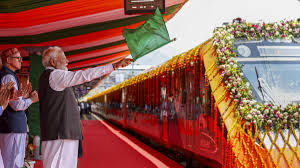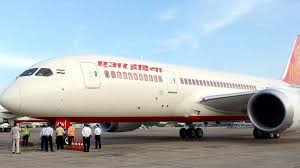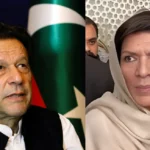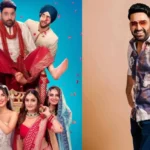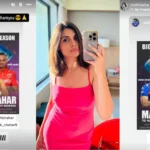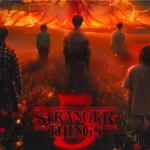Devotion and Lights Across India: Twin Celebrations of Guru Nanak Jayanti and Kartik Purnima
The rare confluence of two major festivals – Guru Nanak Jayanti and Kartik Purnima – brought spiritual fervor and nationwide celebrations across India on Wednesday. Due to the two occasions falling on the same day this year, many states declared public holidays, due to which schools, banks and many government offices remained closed.
The atmosphere across the country became vibrant and devotional as Sikh, Hindu and Jain communities came together to celebrate this auspicious day with prayers, rituals and community service. From the Golden Temple of Amritsar to the Ghats of Varanasi and Haridwar, devotees gathered in large numbers to celebrate the day, which holds great significance in both Sikhism and Hinduism.
Celebration in Gurudwaras
For Sikhs, Guru Nanak Jayanti, or Guruparva, commemorates the birth anniversary of Guru Nanak Dev Ji, the founder of Sikhism and the first of the ten Sikh Gurus. The day began with Prabhat Pheris (morning processions) in towns and cities, where devotees sang bhajans and prayed from the Guru Granth Sahib.
Thousands of devotees have been standing in line since morning for worship in the Golden Temple of Amritsar. The temple was illuminated with lights, and the sacred sarovar (pond) surrounding it was glittering with floating lamps. Special langar (community kitchen) served food to lakhs of people, upholding the message of equality and selfless service preached by Guru Nanak Dev Ji.
In Delhi, Patna Sahib, and Nanded — other important Sikh pilgrimage centers — similar scenes of devotion were seen. The entire Sikh community celebrated with enthusiasm, reciting kirtans and organizing nagar kirtans (religious processions) with traditional music, Gatka martial arts displays, and decorations of flowers and flags.
Kartik Purnima and Dev Deepawali Celebrations
Simultaneously, millions of Hindus observed Kartik Purnima, considered one of the most sacred full-moon days in the Hindu calendar. The day marks the end of the month of Kartik, which is believed to be the holiest month for religious rituals and charity.
Devotees took early morning dips in rivers such as the Ganga, Yamuna, Godavari, and Narmada, believing it to cleanse sins and bring spiritual merit. In Varanasi, the celebration reached its peak with Dev Deepawali, where the ghats of the holy city were lit up with millions of earthen lamps (diyas), creating a breathtaking spectacle.
Temples across the country, including Pushkar, Haridwar, Prayagraj, and Rishikesh, were adorned with flowers and lights. Devotees offered prayers to Lord Vishnu and Lord Shiva, performed charity, and took part in fairs organized near the ghats.
Public Holiday Declared in Many States
Given the spiritual significance of both festivals, several states — including Punjab, Haryana, Delhi, Uttar Pradesh, Bihar, Rajasthan, and Madhya Pradesh — declared a public holiday. Schools, colleges, banks, and government offices remained closed, while festive crowds filled the streets.
Banks under the Reserve Bank of India’s (RBI) holiday schedule were also shut in multiple cities. The Indian Stock Market (BSE and NSE), however, remained operational, while transport services operated on regular schedules with minor diversions near major celebration venues.
Educational institutions took the opportunity to organize online sessions and cultural events earlier in the week, highlighting the messages of unity, peace, and compassion shared by Guru Nanak Dev Ji and the significance of Kartik Purnima in promoting charity and faith.
Security and Crowd Management Measures
Authorities in major pilgrimage centers such as Amritsar, Varanasi, and Haridwar implemented strict crowd management and security measures. Police, volunteers, and disaster management teams were deployed to ensure smooth movement and safety during the processions and river dips.
The Ministry of Railways announced special train services and extended coach capacity to accommodate devotees traveling for the festivals. Local administrations also installed temporary health camps, lost-and-found counters, and traffic diversions to manage the heavy influx of pilgrims.
Messages from Leaders
Prime Minister Narendra Modi and President Droupadi Murmu extended their greetings to citizens on the twin festivals.
PM Modi shared on X (formerly Twitter):
“Greetings on Guru Nanak Jayanti. May the teachings of Guru Nanak Dev Ji inspire us to serve humanity with compassion and humility. On Kartik Purnima, I pray for everyone’s well-being and peace.”
Leaders across the political spectrum echoed similar sentiments, emphasizing the message of peace, equality, and universal brotherhood.
Festive Spirit and Shared Values
The rare coincidence of Guru Nanak Jayanti and Kartik Purnima has added a special layer of harmony and unity this year. While the Sikh community celebrates the birth of their revered Guru, Hindus mark the divine day of light and devotion.
Together, these festivals reflect India’s shared spiritual ethos — celebrating diversity, compassion, and collective faith. From glowing lamps on river ghats to hymns echoing in gurudwaras, the entire nation resonated with one unified prayer for peace and humanity.
As the day drew to a close, the glow of millions of diyas and the sound of devotional music across the country became a symbol of India’s cultural richness — a nation where every faith shines together in the spirit of unity and reverence.



